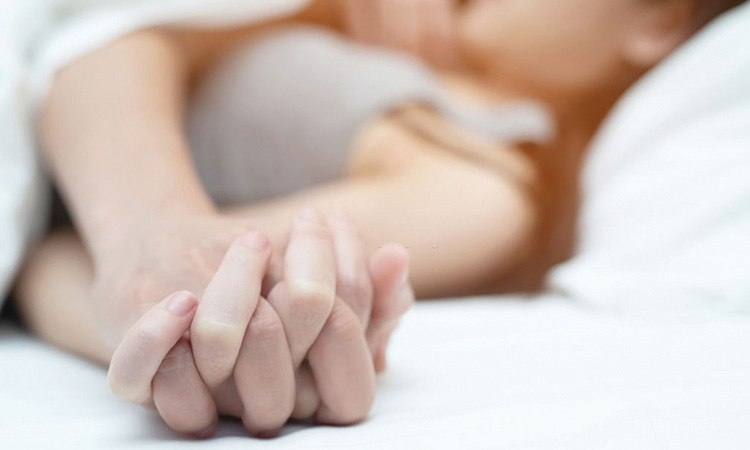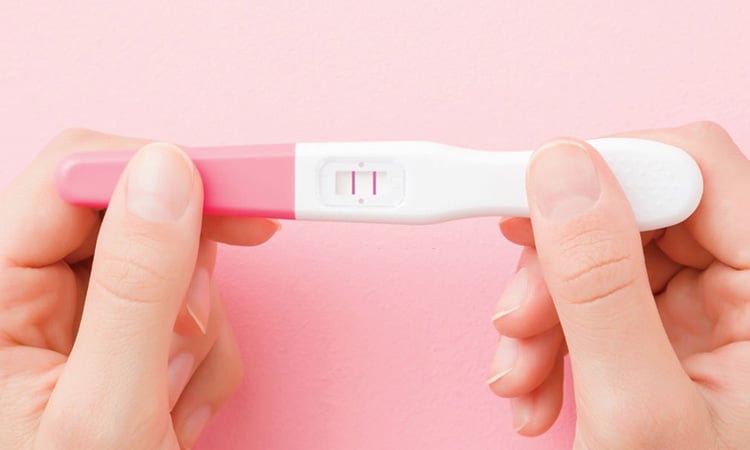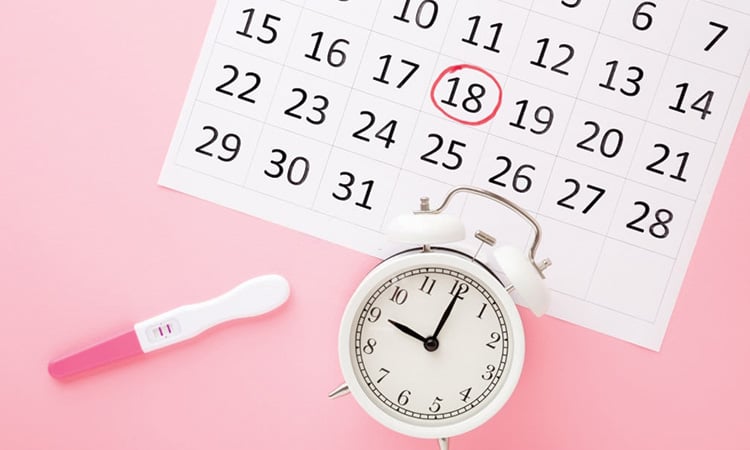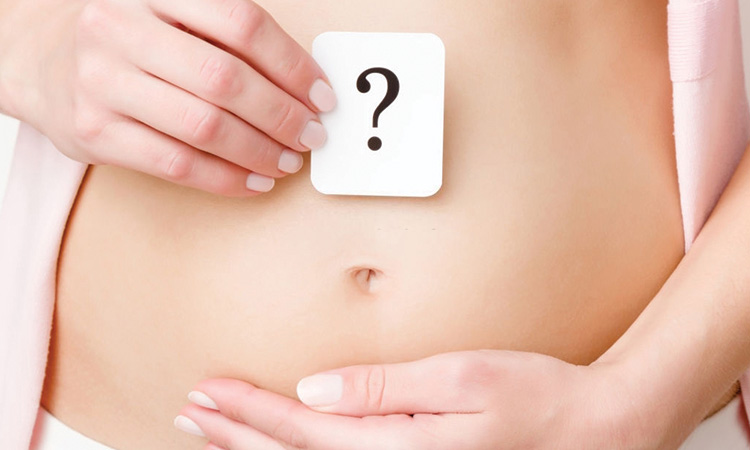Couples trying to conceive have to know about the most fertile time. For this, the most critical thing to know is when you are ovulating. Once you know what to look for, signs of ovulation are something you need to pay careful attention to so as to not miss them. Look out for these 9 signs of ovulation to know your most fertile time. Before that, however, let’s know the basics.
What Is Meant By Ovulation?
A female child is born with millions of eggs in her ovaries. Yet, only a few hundred will be left when she hits puberty. Each egg will be surrounded by a cavity called follicles.
Due to the stimulation of certain endocrine glands, there will be a surge in the level of LH hormone. And, in response to these hormonal actions, the follicle breaks and releases the eggs to the fallopian tube. The release of a matured egg from the ovary is termed ovulation.
The released egg enters the fallopian tube looking forward to sperms for fertilization. Ovulation usually happens around 14 or 15 days from the first day of the last period.
However, keep in mind that ovulation happens at the end of a long chain of complex hormonal events. These hormonal actions can vary every month. And therefore, the time of ovulation can also change with each cycle.
Normally one egg is released during one menstrual cycle. During her reproductive years (estimated 15 to 49 Years) years around 300 to 400 eggs will be released through ovulation. Ovulation usually happens anywhere between the 11th and 21st day of the menstrual cycle.
Calculate Due Date With Conception Date
How Does Knowing When You Are Ovulating Help In Getting Pregnant?
Ovulation and fertility are interrelated. It is during ovulation, the mature egg which is ready to get fertilized by the sperm is released to the fallopian tube. Only if the sperm is available, the fertilization and pregnancy happen.
As the egg will be available for fertilization for a limited time, it is important to know when the woman is ovulating. Only then you can plan intercourse at the right time. Not missing this fertile window of the cycle increases the chances of getting pregnant.
Usually, this fertile window lasts 6 days. Five days before ovulation and the ovulation day. This is because the life span of sperm is 5 days and that of an egg is only 24 hours.
9 Signs Of Ovulation To Know When Trying For A Baby
In a normal menstrual cycle, one can expect ovulation towards the half of the cycle. It usually happens around 14 days prior to the first day of the next period. However, the exact time will not be the same for all cycles.
Related Reading: Garlic And Fertility – How To Use The Herb For Best Results
According to our panel gynaecologist Dr Ankita Patel Tayal, the signs of ovulation can be subtle. Yet, with some observation skills, you will be able to track and predict the fertile window. Here are some signs and symptoms of ovulation.
1. Increased sex drive

Research proves that sex drives in a female increases as she enters the fertile window. It is nature’s way to procreate. Besides feeling more in mood, many women undergo some subtle changes, which on the whole make your partner more attracted to you too.
This increase in sex drive during your fertile window and a drop in libido once ovulation passes are all hormonal. Hormones like estrogen and luteinizing hormone (LH) increase as the ovulation nears and peaks during the time of ovulation.
Thus, an increase in sex drive towards the middle of the cycle can be considered as one of the signs of ovulation.
At the same time, several factors can impede one’s sex drive. And, therefore, just because you’re not in the mood doesn’t mean you are not ovulating.
2. Lower abdominal pain
Many women experience lower abdominal pain concentrated on one side during ovulation. Which side the pain appears depends on which ovary is releasing the egg during that cycle. This ovulation cramping is called “Mittelschmerz”. The pain ranges from mild cramps to sharp and sudden wrench.
According to studies about half of all women experience ovulation pain at some point during their reproductive life. Sometimes mild spotting also accompanies the cramp. One of the theories about the reason that cause abdominal pain during ovulation goes like this.
An egg is surrounded by follicular fluid. During ovulation, the follicle breaks, and the egg is discharged. During this process, some blood and fluid also release, which can irritate the abdominal cavity of that side. This can bring about cramps.
The pain will subside soon after the egg is released or as soon as the body absorbs the fluid or blood. Thus, abdominal pain may last a few minutes to a whole day or two. While some women experience this pain every single month, some may not experience this pain at all.
Related Reading: 7 Best Foods To Increase Fertility
3. Change in body temperature
It is scientifically proven that a woman’s body temperature dips a bit just before she ovulates. Then, 24 hours after ovulation the temperature starts to rise and continues to stay up for several days. This sudden dip in temperature is one of the signs of ovulation.
It is not a hundred percent reliable method to find the fertile window. However, tracking basal body temperature along with other signs can help to pinpoint the fertile window more accurately.
4. A positive sign on ovulation predictor kit

If used correctly, a positive result that comes off a ovulation predictor kit (OPK) helps to find the fertile window. OPKs are easy to find in all pharmacies and even in leading stores and supermarkets.
Dr Ankita Patel Tayal, MD OBGYN, says that OPKs are urine-based kits similar to pregnancy test kits and are very easy to use. Instead of HCG content detected by the pregnancy test kit, OPK detects the rise in the level of luteinizing hormone (LH) in the urine.
It comes with several straps and starts doing the test 4 to 6 days prior to the middle of the cycle. A positive result indicates LH level is high and you will ovulate in the coming 24 to 36 hours. In that case, consider it as a fertile window and have sex every day during these two to three days.
5. Changes in cervical position
Cervix is the top portion of the vagina and lower part of the uterus. Cervix changes with respect to the menstrual cycle. The cervix tends to change all through the menstrual cycle.
When a woman is close to ovulation, her cervix will become higher, softer, and more open. Many women might think only an Ob-gyn will be able to check the cervix. But with little patience and practice, a woman can safely use her fingers to feel and locate the cervix.
You can also find its position starts to descend as the period approaches. When you get familiar with these changes, you can find out if you are close to ovulation or not.
However, it is always important to maintain hygiene while conducting this test. Never attempt this experiment if you have an active vaginal infection or UTI.
6. Changes in mucus
Tracking the changes in vaginal discharge is a reliable means to detect ovulation and fertile window. You might have noticed changes in your vaginal secretions throughout your menstrual cycle. There are times when there are no secretions at all as well. Changes in vaginal mucus are one of the signs of ovulation.
This is because hormonal changes that happen throughout a woman’s reproductive cycle affect the consistency, amount, and appearance of cervical mucus.
When you are nearing ovulation the hormone estrogen heightens and this leads to an increase in the amount of vaginal mucus. Just before ovulation, the vaginal mucus starts to resemble egg white as it turns clear, becomes very stretchy and watery.
Related Reading: How Does Follicular Scan Help In Getting Pregnant?
The consistency and pH of this mucus are favorable for the sperms and helps to reach the egg that will be released shortly afterward.
On the other hand, after ovulation, the mucus starts to turn thick and cloudy. Its quantity also starts to decrease noticeably. This is due to the increasing level of progesterone hormone. This thickened mucus blocks sperm or any other foreign object to enter the uterus.
7. Mid-cycle spotting
Light spotting towards the middle of the cycle could be a sign of ovulation. It is called ovulation spotting. Not all women experience mid-cycling spotting. In fact, according to studies, only 4.8 % of women experience this.
Ovulation spotting happens either due to the rapid hormonal changes that happen during ovulation or due to follicle rupture that happens when the egg is released.
A sudden drop in estrogen levels can reduce the thickness of the uterine lining. This can cause some of the tissue to shed. Likewise, as the follicle rupture, some secretion that falls in the uterine lining can irritate it, thereby, resulting in spots.
Spotting will be light and will disappear within two days. Mild cramps can also accompany spotting.
8. Sense of smell sharpens

It is found that the sense of smell of women can heighten as the fertility peaks. This increased sense of smell is a typical sign of ovulation. It is nature’s way to make the women sense and get attracted to the male pheromone – androstenone.
10. Swollen inguinal lymph nodes
This is one of the less-known ovulation signs. This happens to around 70 percent of women. Yet most of them fail to recognize it. The inguinal lymph nodes are small glands placed on either side of the pelvis. Inguinal lymph swelling more often appears on the same side of the body from the ovary the egg is released during that cycle.
These lymph nodes swell roughly to the size of a pea prior to ovulation. This change will be subtle. Only those who are exceptionally observant and start to examine the area a few days prior to the middle of their cycle will be able to detect it. Click here to know how to check these lymph nodes.
Related Reading: 18 Early Signs Of Pregnancy Before Periods
How Long Does Ovulation Last?
The process of ovulation begins as the body starts to release follicle-stimulating hormone (FSH). This usually happens between the 6th -14th day of the menstrual cycle. FSH helps the egg inside the ovary to mature.
Once the egg is mature, the body starts to release the luteinizing hormone (LH). The surge of LH triggers the egg’s release. Studies show the ovulation takes place within 28 to 36 hours after the LH surge. The ovulation lasts from 12 to 24 hours.
After this timeline, the ovum or egg degenerates and dissolve into the uterine lining. It is then and shed with the woman’s monthly period around two weeks later.
Can I Ovulate Immediately After Stopping Pills?
Dr Ankita Patel Tayal, MD OBGYN says that generally, there will be no issues regarding ovulation after stopping pills. To increase the chances of preventing pregnancy, you should have the pill daily, that too more or less during the same time. If you skip a pill, there is a chance of pregnancy. This alone shows that pills will not adversely affect ovulation.
In many women, more often, the ovulation will start within weeks after stopping pills, depending when the pills are discontinued. If you stop taking pills after reaching the middle of your pack, you might ovulate immediately and might get pregnant.
On the other hand, if you stopped the pill after completing the entire pack, then you will ovulate after a couple of weeks as a part of a normal cycle. However, for some women, it might take a couple of months before ovulation starts naturally.
The good news is that women’s body does not need to eliminate birth control hormones and it is possible to conceive within a couple of months if you don’t miss signs of ovulation and try in the fertile window.
What Is The Most Fertile Time?

Normally, five days prior to ovulation and the day of ovulation -a total of six days of the monthly cycle – is considered the most fertile time. As the sperm can survive up to 5 days in a women’s body and the eggs can sustain only from 12 to 24 hours after being released, these six days are considered as fertile time.
The fertility peaks during the two days before ovulation. The chances of getting pregnant are more if you have sex on these two days rather than you have sex on the same day of ovulation.
Having sex every day during the fertile window or even every other day during the fertile window heightens the chances of getting pregnant.
Conclusion
If the couple wishes to get pregnant naturally as fast as possible, it is important to have sex at right time. Therefore, it is important to understand the signs of ovulation and how long the fertile window lasts.
Factors like stress or change in diet can influence ovulation and the exact day might not be the same for two successive cycles. On the other hand, some medical conditions can even adversely affect ovulation. Therefore, if not conceiving even after trying for two to three months you should consult a doctor.


